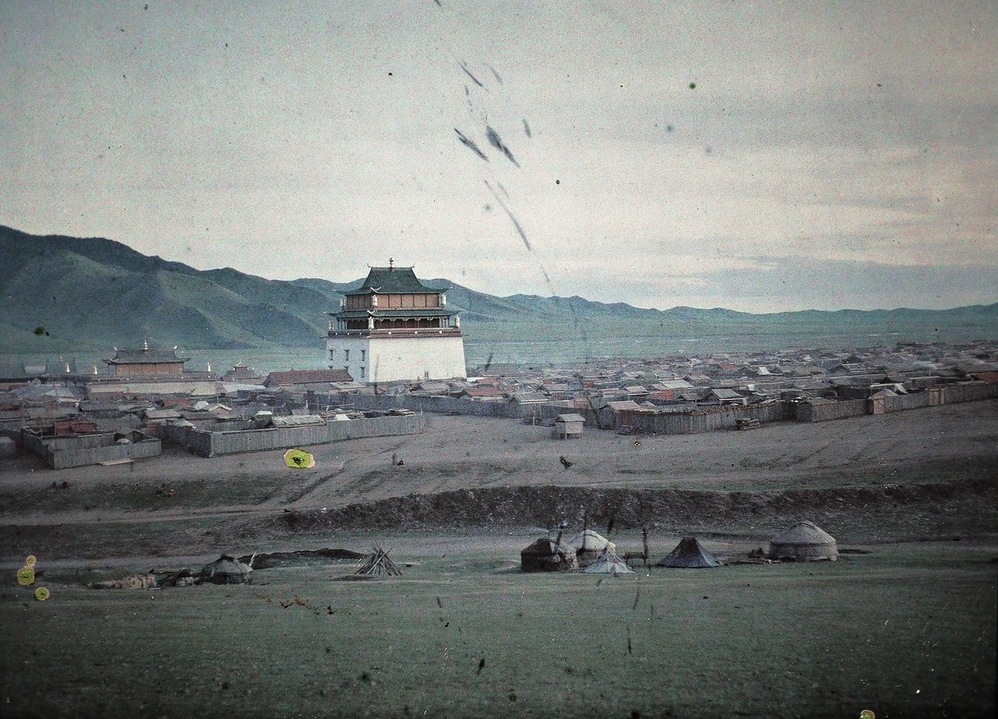Gandantegchinlen Monastery on:
[Wikipedia]
[Google]
[Amazon]
The Gandantegchinlen Monastery ( mn, Гандантэгчинлэн хийд, ''Gandantegchinlen khiid'', short name: Gandan mn, Гандан) is a Mongolian Buddhist monastery in the Mongolian capital of Ulaanbaatar that has been restored and revitalized since 1990. The Tibetan name translates to the "Great Place of Complete Joy". It currently has over 150
 The monastery was constructed by order of the 5th Jebtsundamba Khutuktu in 1809. The first temple was the Gungaachoilin Datsan. Only one wooden pillar remains from this temple. In 1838, the Gandantegchenlin Temple was built along with the private residence of the Jebtsundamba Khutuktu. The 13th Dalai Lama stayed in the residence in 1904. In 1840, the
The monastery was constructed by order of the 5th Jebtsundamba Khutuktu in 1809. The first temple was the Gungaachoilin Datsan. Only one wooden pillar remains from this temple. In 1838, the Gandantegchenlin Temple was built along with the private residence of the Jebtsundamba Khutuktu. The 13th Dalai Lama stayed in the residence in 1904. In 1840, the
Official website of the Gandan Monastery
Article
on Ulaanbaatar with a section on the monastery
Buddhism in Mongolia After 1990An interview
with Tibetologist Glenn H. Mullin {{Buddhist monasteries in Mongolia Buddhism in Ulaanbaatar Buddhist monasteries in Mongolia Buildings and structures in Ulaanbaatar Tibetan Buddhism in Mongolia Tibetan Buddhist monasteries
monks
A monk (, from el, μοναχός, ''monachos'', "single, solitary" via Latin ) is a person who practices religious asceticism by monastic living, either alone or with any number of other monks. A monk may be a person who decides to dedic ...
in residence. It features a 26.5-meter-high statue of Avalokiteśvara
In Buddhism, Avalokiteśvara (Sanskrit: अवलोकितेश्वर, IPA: ) is a bodhisattva who embodies the compassion of all Buddhas. He has 108 avatars, one notable avatar being Padmapāṇi (lotus bearer). He is variably depicted, ...
. It came under state protection in 1994.
History
 The monastery was constructed by order of the 5th Jebtsundamba Khutuktu in 1809. The first temple was the Gungaachoilin Datsan. Only one wooden pillar remains from this temple. In 1838, the Gandantegchenlin Temple was built along with the private residence of the Jebtsundamba Khutuktu. The 13th Dalai Lama stayed in the residence in 1904. In 1840, the
The monastery was constructed by order of the 5th Jebtsundamba Khutuktu in 1809. The first temple was the Gungaachoilin Datsan. Only one wooden pillar remains from this temple. In 1838, the Gandantegchenlin Temple was built along with the private residence of the Jebtsundamba Khutuktu. The 13th Dalai Lama stayed in the residence in 1904. In 1840, the Vajradhara
Vajradhara (Sanskrit: वज्रधर. (Also, the name of Indra, because 'Vajra' means diamond, as well as the thunderbolt, anything hard more generally) Tibetan: རྡོ་རྗེ་འཆང། rdo rje 'chang (Dorje Chang); zh, t=金� ...
Temple was built. In 1869, the Zuu Temple was built. In 1913, the tall Avalokiteśvara temple was built. In 1925, the temple for keeping the remains of the 8th Jebtsundamba Khutuktu was built. It is now the monastery library.
In the 1930s, the Communist government of Mongolia, under the leadership of Khorloogiin Choibalsan and under the influence of Joseph Stalin, destroyed all but a few monasteries and killed more than 15,000 lamas.
Gandantegchinlen Khiid monastery, having escaped this mass destruction, was closed in 1938, but then reopened in 1944 and was allowed to continue as the only functioning Buddhist monastery, under a skeleton staff, as a token homage to traditional Mongolian culture and religion. With the end of Marxism in Mongolia in 1990, restrictions on worship were lifted.
Statue
The original statue, made of copper, was built after appeals to the Mongolian public; its intent was to restore the sight of the 8th Jebtsundamba, also known asBogd Khan
Bogd Khan, , ; ( – 20 May 1924) was the khan of the Bogd Khaganate from 1911 to 1924, following the state's ''de facto'' independence from the Qing dynasty of China after the Xinhai Revolution. Born in Tibet, he was the third most import ...
), who had claimed the title of Emperor of Mongolia. The statue was built by Bogd Javzandamba's principal minister, Chin Wan Khanddorj. Russian troops dismantled the original statue in 1938. After the end of the Soviet era, the statue of Avalokiteśvara was rebuilt in 1996, funded by donations by the Mongolian people. It features 2,286 precious stones and is gilded with gold leaf.
Since 1992, the Supreme Leader of the Centre of All Mongolian Buddhists and Abbot of Gandantegchinlen Monastery has been Lama Gabju Choijamts Demberel.
The monastery is surrounded by the Gandan ger suburb.
See also
*Buddhism in Mongolia
Buddhism is the largest and official religion of Mongolia practiced by 53% of Mongolia's population, according to the 2010 Mongolia census. Buddhism in Mongolia derives much of its recent characteristics from Tibetan Buddhism of the Gelug and ...
References
External links
Official website of the Gandan Monastery
Article
on Ulaanbaatar with a section on the monastery
Buddhism in Mongolia After 1990
with Tibetologist Glenn H. Mullin {{Buddhist monasteries in Mongolia Buddhism in Ulaanbaatar Buddhist monasteries in Mongolia Buildings and structures in Ulaanbaatar Tibetan Buddhism in Mongolia Tibetan Buddhist monasteries